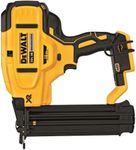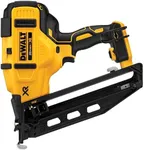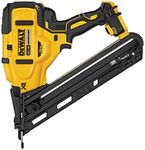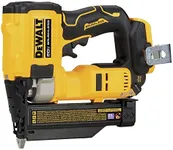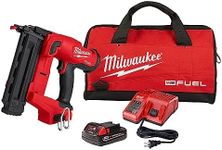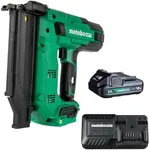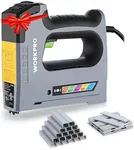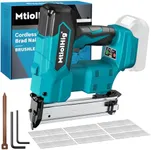Buying Guide for the Best Electric Nailer
Choosing the right electric nailer can make your woodworking or construction projects much easier and more efficient. Electric nailers are designed to drive nails quickly and accurately, saving you time and effort compared to manual hammering. When selecting an electric nailer, it's important to consider several key specifications to ensure you get the best fit for your needs. Understanding these specs will help you make an informed decision and choose a nailer that matches your project requirements and personal preferences.Power SourceElectric nailers can be powered by either corded or cordless systems. Corded nailers are plugged into an electrical outlet and provide consistent power, making them ideal for long projects where you don't want to worry about battery life. Cordless nailers, on the other hand, use rechargeable batteries, offering greater mobility and convenience, especially for outdoor or remote work sites. If you need to move around a lot or work in areas without easy access to power outlets, a cordless nailer might be the better choice.
Nail Size CompatibilityDifferent electric nailers are designed to handle different sizes and types of nails. Some nailers are versatile and can accommodate a range of nail sizes, while others are specialized for specific types, such as brad nails, finish nails, or framing nails. Consider the types of projects you'll be working on and choose a nailer that is compatible with the nail sizes you will most frequently use. For delicate trim work, a nailer that handles smaller brad nails is ideal, whereas for heavy-duty framing, you'll need a nailer that can drive larger nails.
Firing ModesElectric nailers typically offer different firing modes, such as sequential and bump firing. Sequential firing requires you to press the trigger for each nail, providing precise control and reducing the risk of accidental firing. Bump firing allows you to hold the trigger and simply bump the nailer against the surface to drive nails quickly, which is useful for high-speed applications. Think about the nature of your projects; if precision is crucial, sequential firing is preferable, but for rapid nailing, bump firing can save time.
Magazine CapacityThe magazine capacity refers to the number of nails the nailer can hold at one time. A larger magazine capacity means fewer interruptions to reload, which can be beneficial for large projects. However, nailers with smaller magazines can be lighter and easier to handle. Consider the scale of your projects and your comfort with the tool's weight. If you have extensive nailing tasks, a larger magazine capacity will be more efficient, but for smaller, detailed work, a lighter nailer with a smaller magazine might be more suitable.
Depth AdjustmentDepth adjustment allows you to control how far the nail is driven into the material. This feature is important for achieving a professional finish and ensuring nails are flush with or slightly below the surface. Some nailers offer easy-to-use dial or knob adjustments, while others may require tools for adjustment. If you work with different materials and need precise control over nail depth, look for a nailer with convenient and accurate depth adjustment features.
Weight and ErgonomicsThe weight and ergonomics of an electric nailer affect how comfortable it is to use, especially during extended periods. A lighter nailer can reduce fatigue, while ergonomic designs with comfortable grips can improve handling and control. Consider how long you'll be using the nailer and choose one that feels comfortable in your hand. If you have a lot of nailing to do, a well-balanced, lightweight nailer with ergonomic features will make your work easier and more enjoyable.
